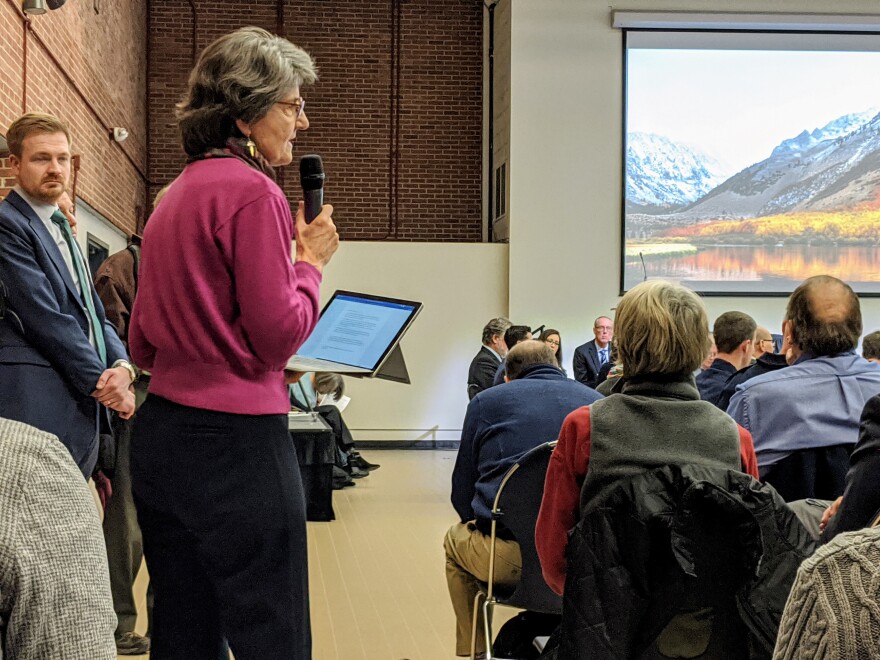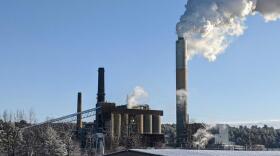Northern New England began an ambitious planning process for offshore wind development in the Gulf of Maine Thursday.
More than 200 stakeholders packed into the first meeting of the new regional wind task force at UNH.
They say the new industry will take years to develop – but it could be a powerful way for Maine, Massachusetts and New Hampshire to fight climate.
The big turnout surprised organizers with the Bureau of Ocean Energy Management. One facilitator said he’d never been to a standing-room-only task force meeting before.
Governor Chris Sununu was energized as he kicked off the day-long event. He says he intends to see offshore wind development succeed in the Gulf of Maine as quickly as possible.
"We want to make sure everyone has input," Sununu says, "but at the end of the day, if we don't get a result, if we don't get a product out of this, then we've all wasted our time."
Sununu called for collaboration and compromise among state and local officials, coastal towns, federal regulators, commercial fishermen, nonprofits and the private sector – despite their differing priorities and political approaches to the issue.
"I'm looking across this room and this is a good team, it really is,” Sununu said. “We're all going to be part of it, but we all have to appreciate what the other side is trying to get, 'cause at the end of the day, this can work – this should work."
More than a dozen federal leases for wind farms are already in development up and down the East Coast, with the potential for “steel in the water,” as BOEM renewable energy program manager Jim Bennett calls it, by as soon as next year.
But Bennett, Sununu and others acknowledge that this won't happen overnight in Northern New England.
The task force will take a couple of years to choose wind leasing areas in federal Gulf of Maine waters, likely at least several miles off shore. Then BOEM will auction the parcels off to developers. Planning, design and construction that comes after that could run through around 2030.
Story continues below BOEM graphic:

The process will also include public input and lots of permits – accounting for marine wildlife and ecosystems, navigational concerns and commercial fisheries.
Portsmouth lobsterman Erik Anderson heads the New Hampshire Commercial Fishermen's Association. He and others say they’re worried about fishing around floating wind turbines.
Officials say that kind of emerging technology could be necessary in the Gulf of Maine to accommodate the uneven sea floor in the areas with the best wind resource.
"This whole issue seems to arise out of somewhat of a not-in-my-backyard approach from land-based projects, but the fishing industry is - that's in our backyard,” Anderson said during public comment at the task force meeting. “We hope that it's not upset.”
Others say the potential payoff from offshore wind is too big to pass up – both for regional economies, and to replace the use of planet-warming fossil fuels.

New Hampshire business commissioner Taylor Caswell says the growing wind industry could let the state combat climate change at an unprecedented scale.
"Part of the complexity of the policy issue has been the sheer size of what we need to be able to accomplish to displace fossil fuels – if, in fact, that's the direction we’re going, which I do think it is,” Caswell says. “And here we have an opportunity to start talking about renewable energy in gigawatts."
BOEM renewable energy program manager Jim Bennett says that scale means offshore wind could transform the region's grid.
"A wind farm offshore is on a scale that's similar to an onshore nuclear power plant,” Bennett says. “When you're talking about multiple offshore wind farms, that adds up."
That opportunity stood out to New Hampshire residents concerned about climate change, such as Sarah Thorne, a retired science teacher from Gilmanton who spoke during public comment.
"Wind energy can give our children a future,” she said. “We must seize this opportunity immediately."
Task force members told BOEM they want to learn more about where turbines should not be built, and about the transmission infrastructure needed to bring the wind power ashore. They also asked for details on how the turbines could affect fishermen and coastal views.
The next task force meeting hasn’t been scheduled yet but will take place in either Maine or Massachusetts.
This post was updated with more details Friday morning. Watch the BOEM task force meeting:









